Mexico City apartment transformed through sliding walls and folding screens
This multifaceted urban Mexico City apartment is a transformable wonderland by Archetonic Architects

This spectacular Mexico City apartment is a true transformable space, a complex assemblage of sliding walls, moving partitions, and blinds. Archetonic Architects, founded by Jacobo Micha Mizrahi in 1991, and including Alan Micha Balas and Jaime Micha Balas, set out to turn this generous double-height apartment into a place of endless opportunities.
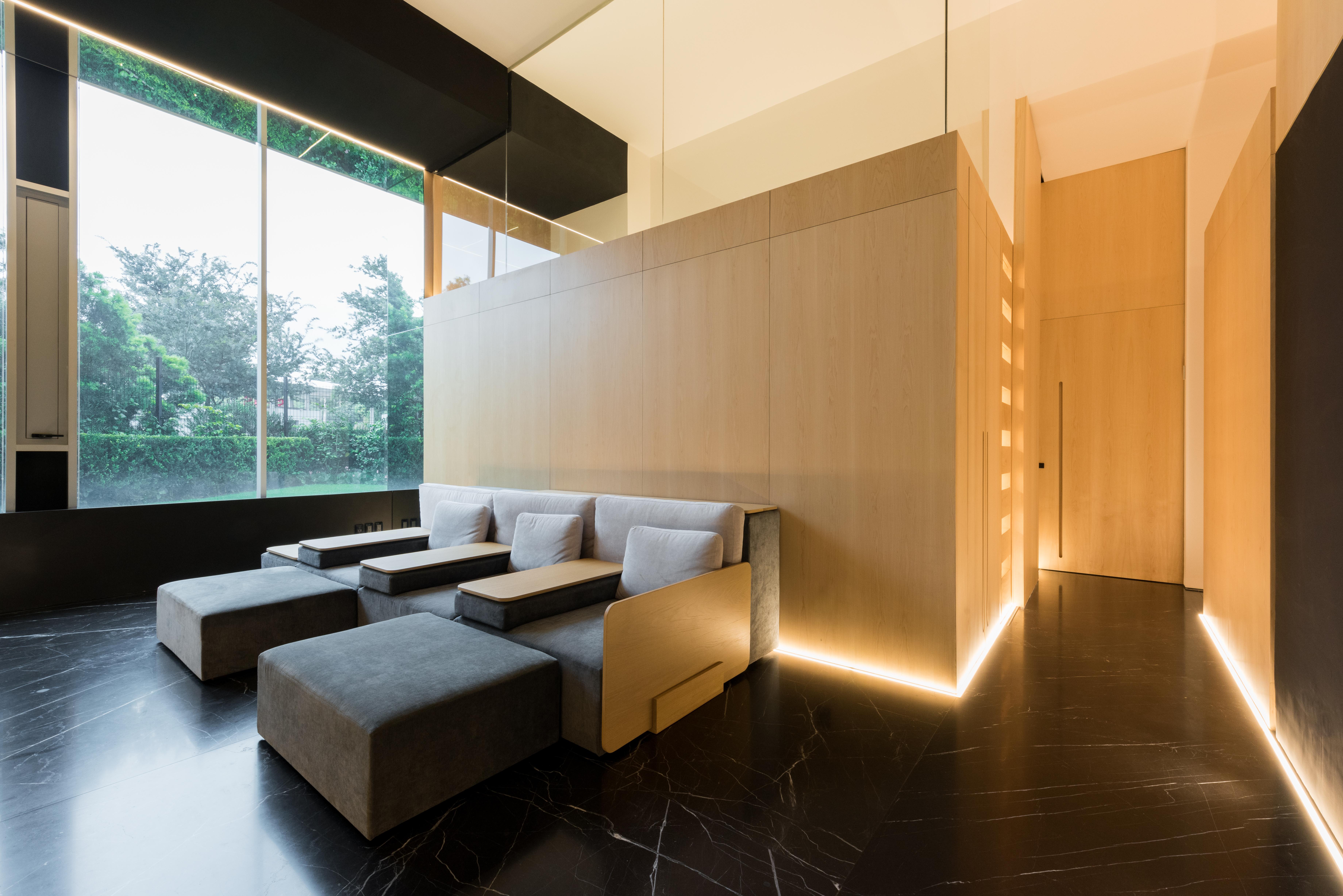
The cinema room. The wooden box contains the main bathroom, with a study above
Creating the Mexico City apartment
‘We sought to take advantage of the double-height space, insert maximum natural light and permeate the interior with the exterior environment through large windows,’ the architects explain.

The dark marble floor contrasts with the light wood fittings
The rectangular plan is bisected by a long corridor running the length of the space. At one end, living and dining, at the other, a pair of en-suite bedrooms. A guest bedroom is tucked away in a marble-clad box in the centre of the space, with upper-level folding wooden walls that concertina aside to open up the space when no one is in residence.
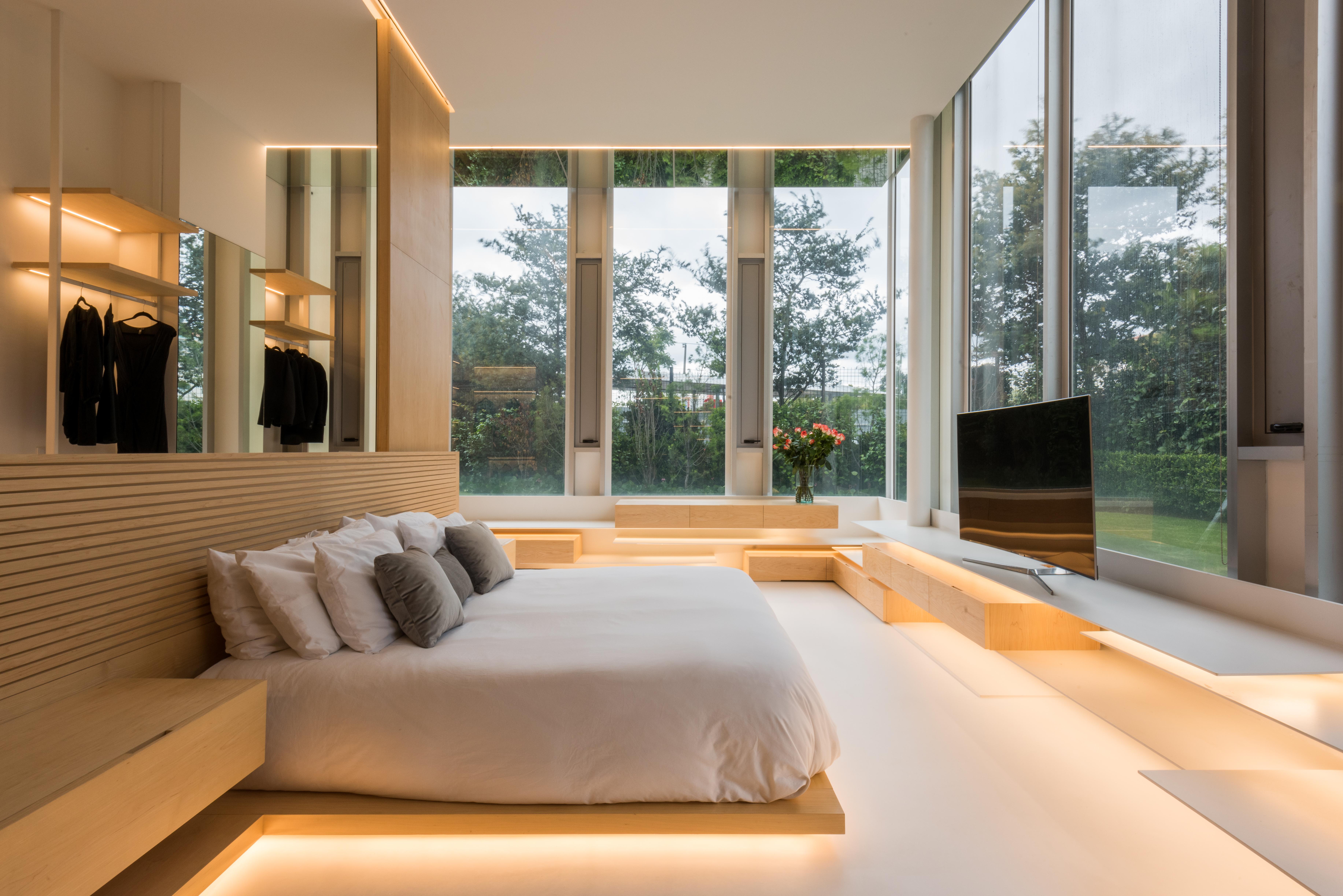
The main bedroom
It's these half-height elements that give the apartment its dynamic character. The dark marble walls are paired with an upper level clad in light wood. ‘The design invites you to decipher light and space, volume and void,’ say the architects.
‘The limits are composed by the duality between the absence and presence of half-height bodies that generate attics and the possibility of using another plane of the apartment.’
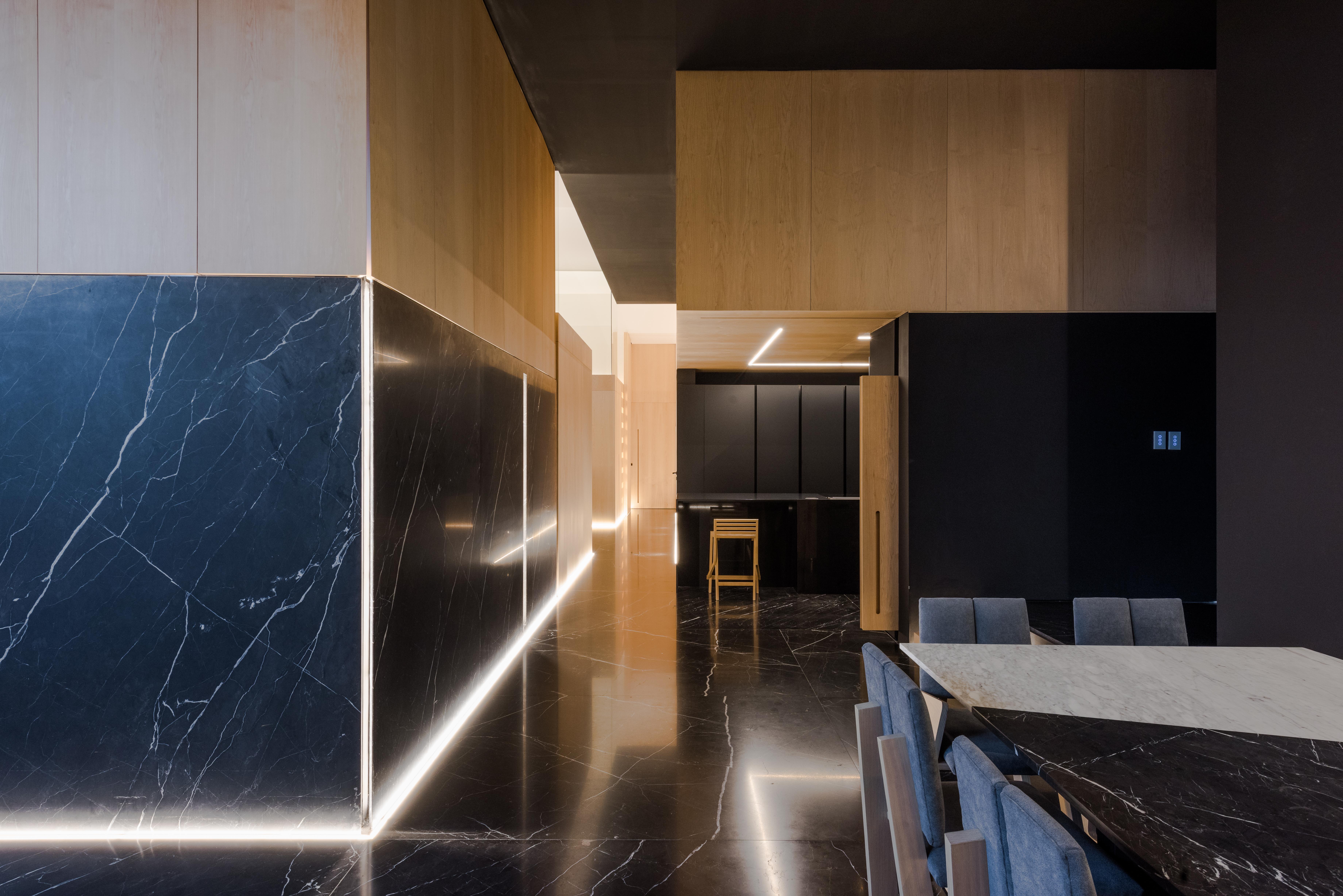
Looking down the central corridor
Not all of these spaces are accessible; some are just voids that hang there to create a generous sense of space.
Above the kitchen is a utility area and bathroom, while two of the downstairs bathrooms are topped with storage. The main bathroom has a hidden study area above it, reached from a ladder and clad in light-scattering mirrors.
Receive our daily digest of inspiration, escapism and design stories from around the world direct to your inbox.

The kitchen adjoins the dining room
The rest of the space can be open or closed by a series of large sliding wooden doors, with illumination cunningly hidden in the joins and junctions between material, backlighting planes and washing light across surfaces.
Two sides of the plan are fully glazed, with a secluded surrounding garden providing a backdrop of green against the material palette.
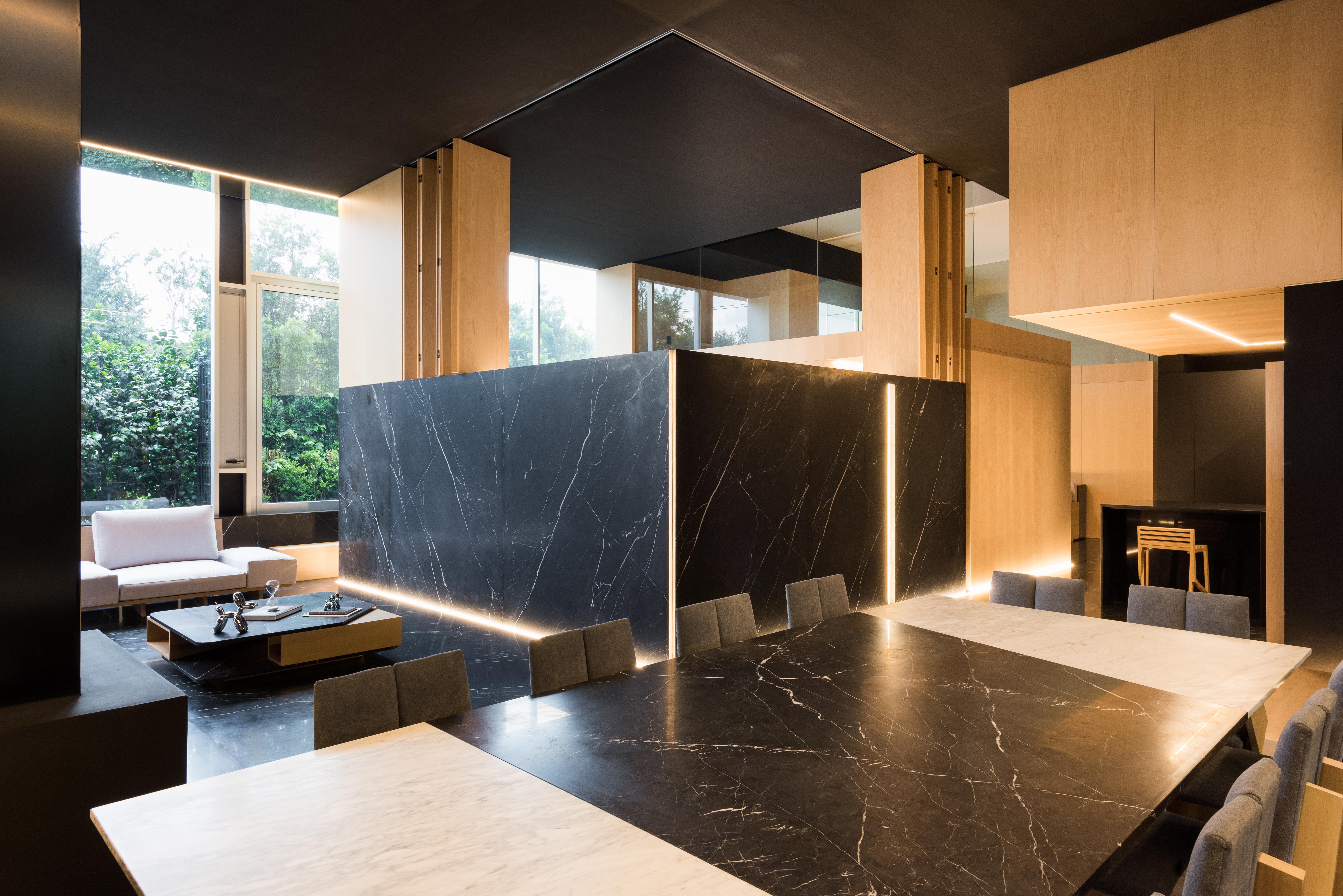
The guest room walls can be opened up when the room is not in use
The exacting requirements also extended to the furniture and storage, much of which was custom made for the space.
The architects describe the completed project, which covers 322 sq m, as a ‘compelling and pure space in which materiality, light and nature were the protagonists’.
Jonathan Bell has written for Wallpaper* magazine since 1999, covering everything from architecture and transport design to books, tech and graphic design. He is now the magazine’s Transport and Technology Editor. Jonathan has written and edited 15 books, including Concept Car Design, 21st Century House, and The New Modern House. He is also the host of Wallpaper’s first podcast.
-
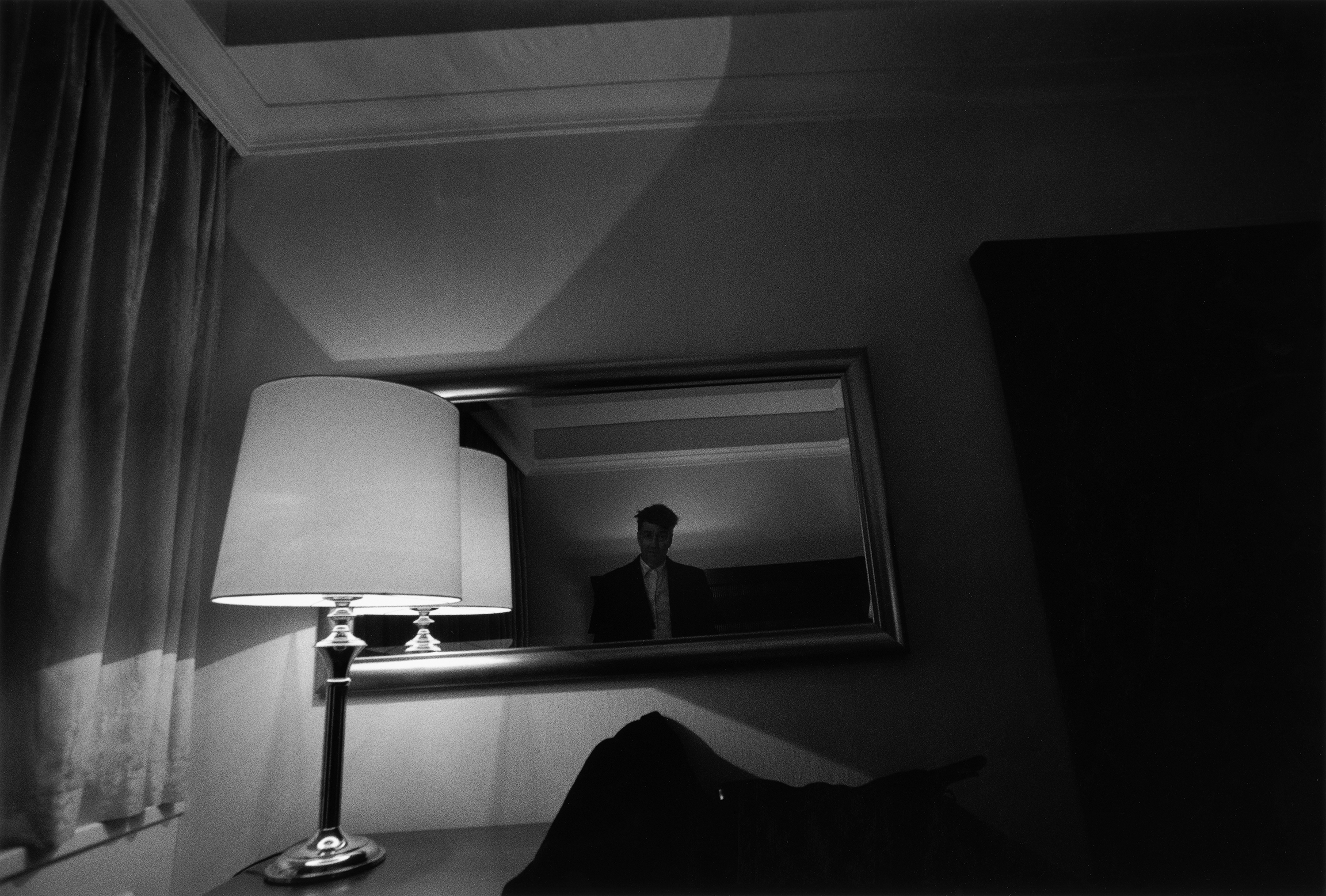 David Lynch’s photographs and sculptures are darkly alluring in Berlin
David Lynch’s photographs and sculptures are darkly alluring in BerlinThe late film director’s artistic practice is the focus of a new exhibition at Pace Gallery, Berlin (29 January – 22 March 2026)
-
 Roland and Karimoku expand their range of handcrafted Kiyola digital pianos
Roland and Karimoku expand their range of handcrafted Kiyola digital pianosThe new Roland KF-20 and KF-25 are the latest exquisitely crafted digital pianos from Roland, fusing traditional furniture-making methods with high-tech sound
-
 Fulham FC’s new Riverside Stand by Populous reshapes the match-day experience and beyond
Fulham FC’s new Riverside Stand by Populous reshapes the match-day experience and beyondPopulous has transformed Fulham FC’s image with a glamorous new stand, part of its mission to create the next generation of entertainment architecture, from London to Rome and Riyadh
-
 Aidia Studio's mesmerising forms blend biophilia and local craft
Aidia Studio's mesmerising forms blend biophilia and local craftMexican architecture practice Aidia Studio's co-founders, Rolando Rodríguez-Leal and Natalia Wrzask, bring together imaginative ways of building and biophilic references
-
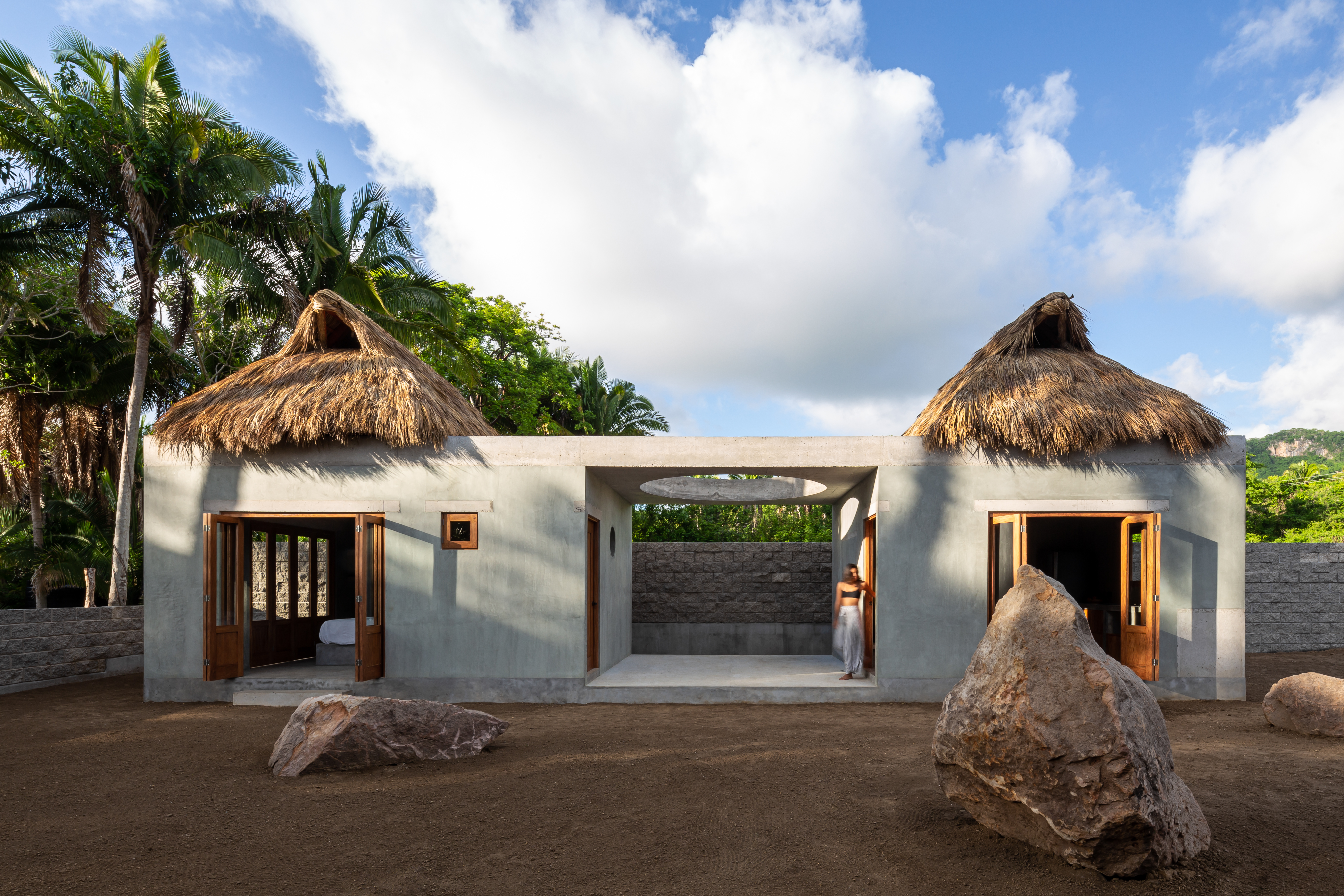 Mexico's Palma stays curious - from sleepy Sayulita to bustling Mexico City
Mexico's Palma stays curious - from sleepy Sayulita to bustling Mexico CityPalma's projects grow from a dialogue sparked by the shared curiosity of its founders, Ilse Cárdenas, Regina de Hoyos and Diego Escamilla
-
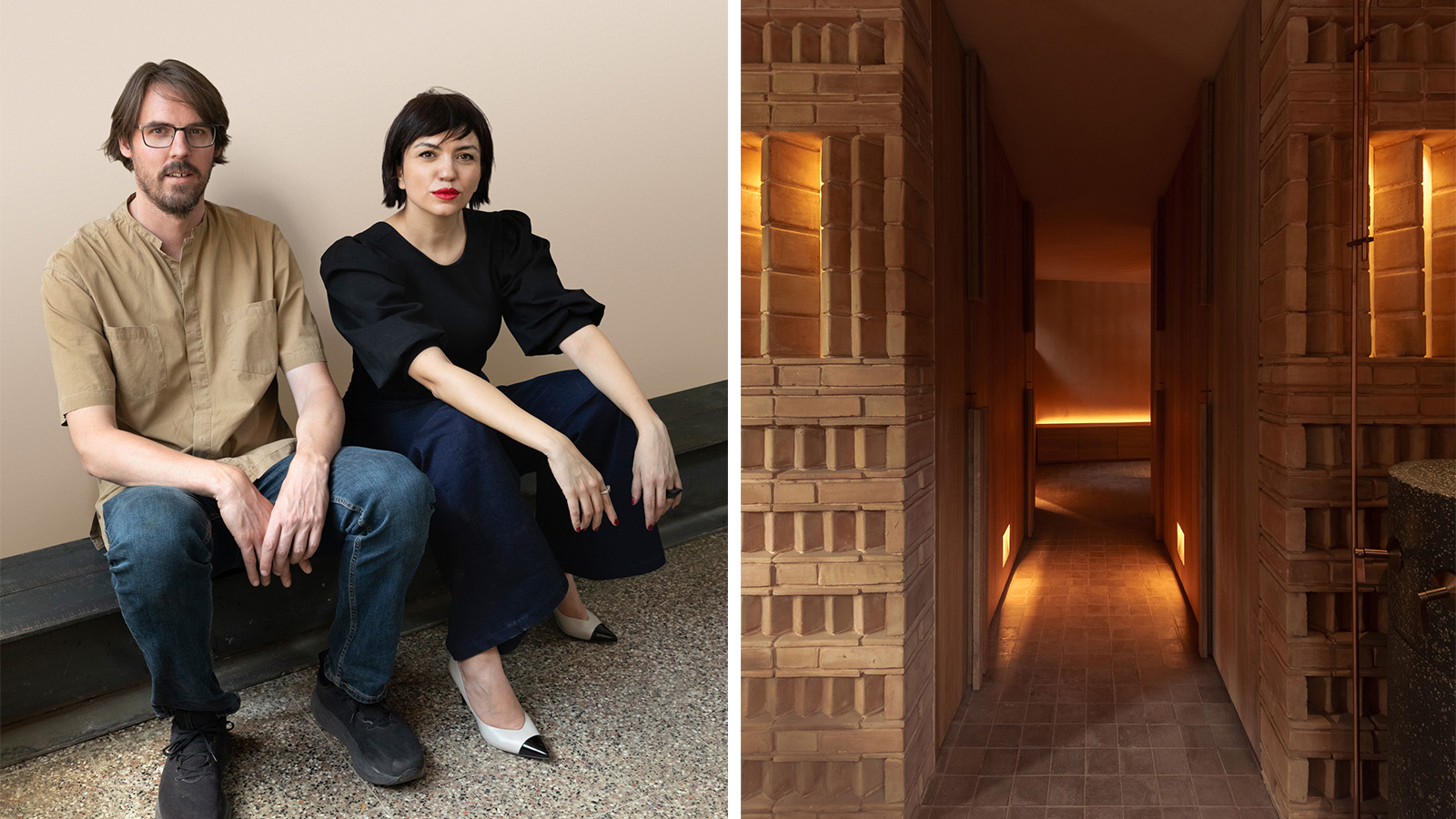 Discover Locus and its ‘eco-localism' - an alternative way of thinking about architecture
Discover Locus and its ‘eco-localism' - an alternative way of thinking about architectureLocus, an architecture firm in Mexico City, has a portfolio of projects which share an attitude rather than an obvious visual language
-
 Deep dive into Carlos H Matos' boundary-pushing architecture practice in Mexico
Deep dive into Carlos H Matos' boundary-pushing architecture practice in MexicoMexican architect Carlos H Matos' designs balance the organic and geometric, figurative and abstract, primitive and futuristic
-
 For Rodríguez + De Mitri, a budding Cuernavaca architecture practice, design is 'conversation’
For Rodríguez + De Mitri, a budding Cuernavaca architecture practice, design is 'conversation’Rodríguez + De Mitri stands for architecture that should be measured, intentional and attentive – allowing both the environment and its inhabitants to breathe
-
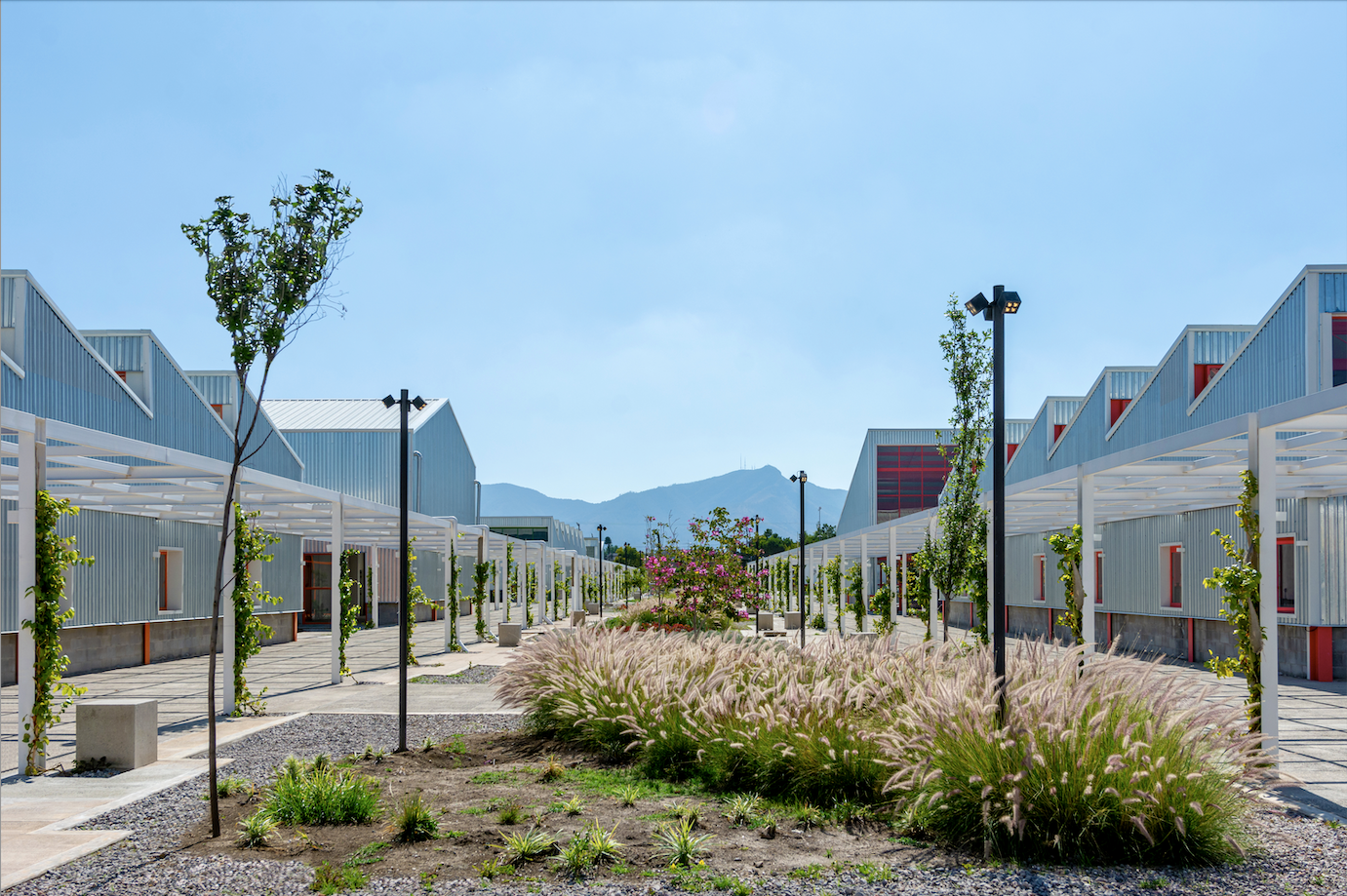 Mexico's Office of Urban Resilience creates projects that cities can learn from
Mexico's Office of Urban Resilience creates projects that cities can learn fromAt Office of Urban Resilience, the team believes that ‘architecture should be more than designing objects. It can be a tool for generating knowledge’
-
 These Guadalajara architects mix modernism with traditional local materials and craft
These Guadalajara architects mix modernism with traditional local materials and craftGuadalajara architects Laura Barba and Luis Aurelio of Barbapiña Arquitectos design drawing on the past to imagine the future
-
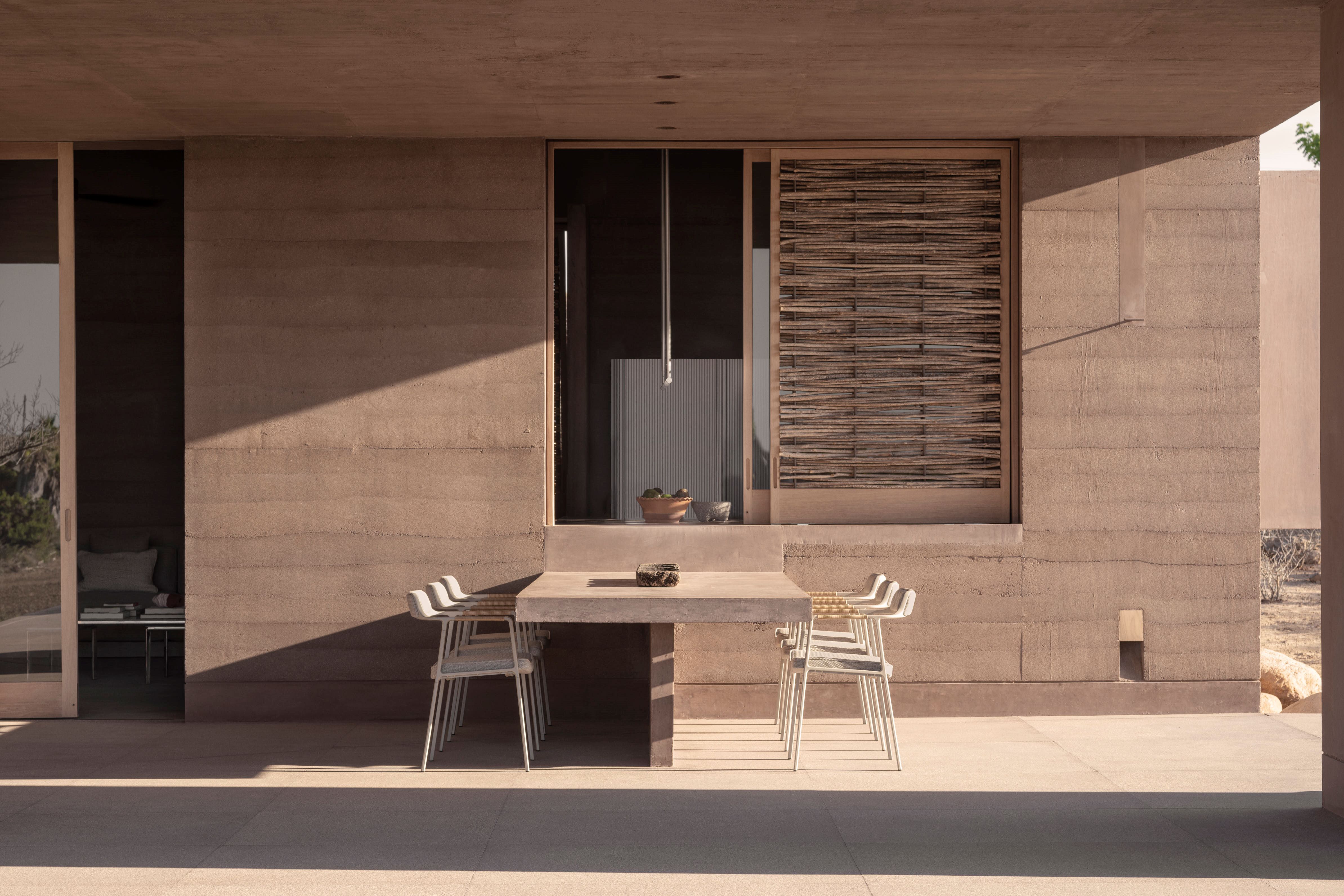 This Mexican architecture studio has a surprising creative process
This Mexican architecture studio has a surprising creative processThe architects at young practice Pérez Palacios Arquitectos Asociados (PPAA) often begin each design by writing out their intentions, ideas and the emotions they want the architecture to evoke